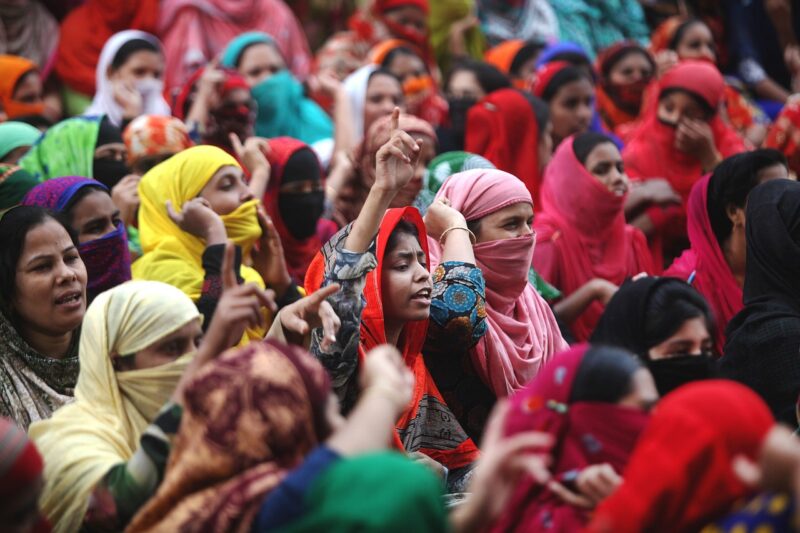
The evolution of political regimes is a fascinating area of study, especially when it comes to the shift from authoritarian to democratic governance. Countries that embark on this transformative journey often face complex challenges, a myriad of socio-political dynamics, and the need for systemic change. This article explores the various paths nations can take when transitioning from authoritarian regimes to democracies, highlighting pivotal moments, strategies employed, and the associated implications.
1. Understanding Authoritarianism and Democracy
Before delving into the transition process, it’s essential to define authoritarianism and democracy. Authoritarian regimes typically centralize power in a single leader or a small group, often suppressing dissent, limiting political freedoms, and controlling media. On the other hand, democracies emphasize political pluralism, individual liberties, and participation in governance.
The transition from an authoritarian regime to democracy involves dismantling the structures that enable autocratic control and fostering an environment conducive to democratic practices.
2. The Factors Influencing Transition
Transitions to democracy are not uniform; they can take numerous forms and are influenced by a variety of factors:
- Economic Conditions: Economic crises can lead to social unrest, prompting calls for political change. For example, the economic turmoil in Eastern European countries post-1989 served as a catalyst for democratic transitions.
- Civil Society Engagement: A robust civil society, including NGOs and grassroots movements, can mobilize citizens and exert pressure on authoritarian regimes, fostering a culture of democracy.
- International Influence: The geopolitical climate and foreign intervention can play significant roles in transitions. Support from international organizations and nations can incentivize reform and help democratize systems.
- Elite Bargaining: In some cases, the elites within an authoritarian regime may negotiate a transition to democracy to maintain stability and their hold on power, leading to a more controlled shift rather than a popular uprising.
Each of these factors can either facilitate or hinder a country’s journey to democracy, significantly shaping the transition’s outcome.
3. Pathways to Democratic Transition
Countries generally follow one of three pathways when transitioning to democracy:
- Revolutionary Change: Sudden and often violent upheavals can result in the overthrow of an authoritarian regime. The Arab Spring of 2011 is a notable example where widespread protests led to regime changes in countries like Tunisia and Egypt. However, the aftermath can vary significantly, with some nations returning to authoritarianism or experiencing prolonged instability.
- Negotiated Transition: Involving dialogue between the ruling authority and opposition groups, this path allows for a more orderly transition. The South African transition from apartheid, led by negotiations between Nelson Mandela and the ruling National Party, exemplifies this approach, resulting in a peaceful democratic transition.
- Gradual Reform: Some regimes may implement reforms gradually, recognizing the need for change to maintain legitimacy. This was seen in countries like Chile under Pinochet, where gradual concessions led to the restoration of democracy after a decade of military rule.
Regardless of the path taken, the transition period is often fraught with challenges, including resistance from former elites and uncertainty about governance structures.
4. Key Challenges in the Transition Process
The journey toward democratization is rarely smooth. Countries face several challenges during the transition:
- Security Dilemmas: The breakdown of authoritarian control can lead to power vacuums filled by extremist groups or civil conflict, posing a significant challenge to establishing a functioning democratic state.
- Institutional Weakness: New democracies often grapple with weak institutions, inadequate rule of law, and limited governmental capacity, which can hinder effective governance and policy implementation.
- Public Disillusionment: If the new government fails to address economic concerns or uphold democratic principles, widespread discontent can lead to backsliding toward authoritarianism.
- Political Polarization: Societal divisions can become exacerbated during transitions, leading to conflict among various factions vying for power. This polarization can further complicate governance and stability.
Effective management of these challenges is crucial to ensuring that the transition leads to a stable and lasting democracy.
5. Case Studies of Successful Transitions
Several countries exemplify successful transitions from authoritarianism to democracy:
- South Africa: The landmark transition from apartheid demonstrated the power of negotiation combined with grassroots activism. Following years of struggle, South Africa held its first free elections in 1994, resulting in a multi-racial democracy under Nelson Mandela’s leadership.
- Spain: After the death of dictator Francisco Franco in 1975, Spain transitioned to democracy through a series of negotiated reforms, culminating in a new constitution in 1978. The country embraced a parliamentary democracy, fostering political and social integration.
- Tunisia: Following the Arab Spring, Tunisia embarked on an ambitious process of democratization. Despite facing numerous challenges, such as economic turmoil and security threats, it has managed to establish a functioning democracy, notably through the election of a national assembly and a new constitution in 2014.
These case studies highlight the varied strategies and circumstances that can facilitate successful transitions, offering valuable insights for countries currently navigating similar paths.
6. Conclusion: The Importance of Support in Democratic Transitions
The transition from authoritarianism to democracy is a complex yet crucial process that shapes the future of nations. Although challenges abound, successful transitions can yield significant benefits, including enhanced political freedoms, better governance, and improved quality of life for citizens.
International support, through diplomatic channels, economic assistance, and capacity-building initiatives, plays an instrumental role in fostering democratic transitions around the world. Engaging civil society, promoting dialogue, and providing resources can help ensure that the foundations of democracy are built firmly and lastingly.
By learning from the experiences of others and addressing the intrinsic challenges inherent in such transformations, countries can strive toward becoming resilient democracies that reflect their citizens’ aspirations and rights.







